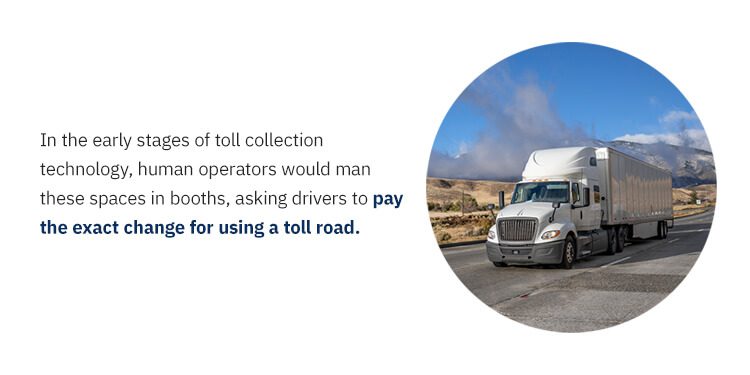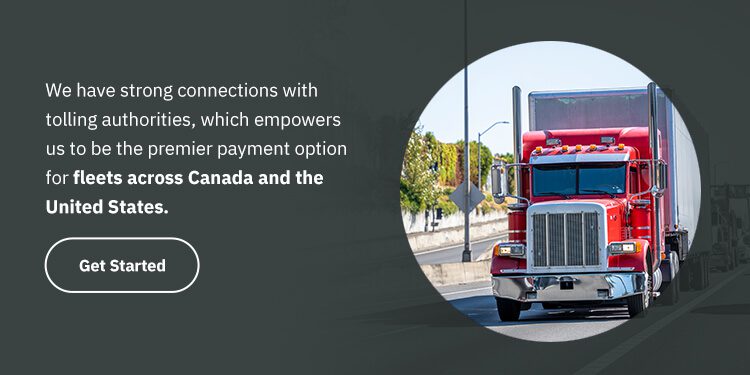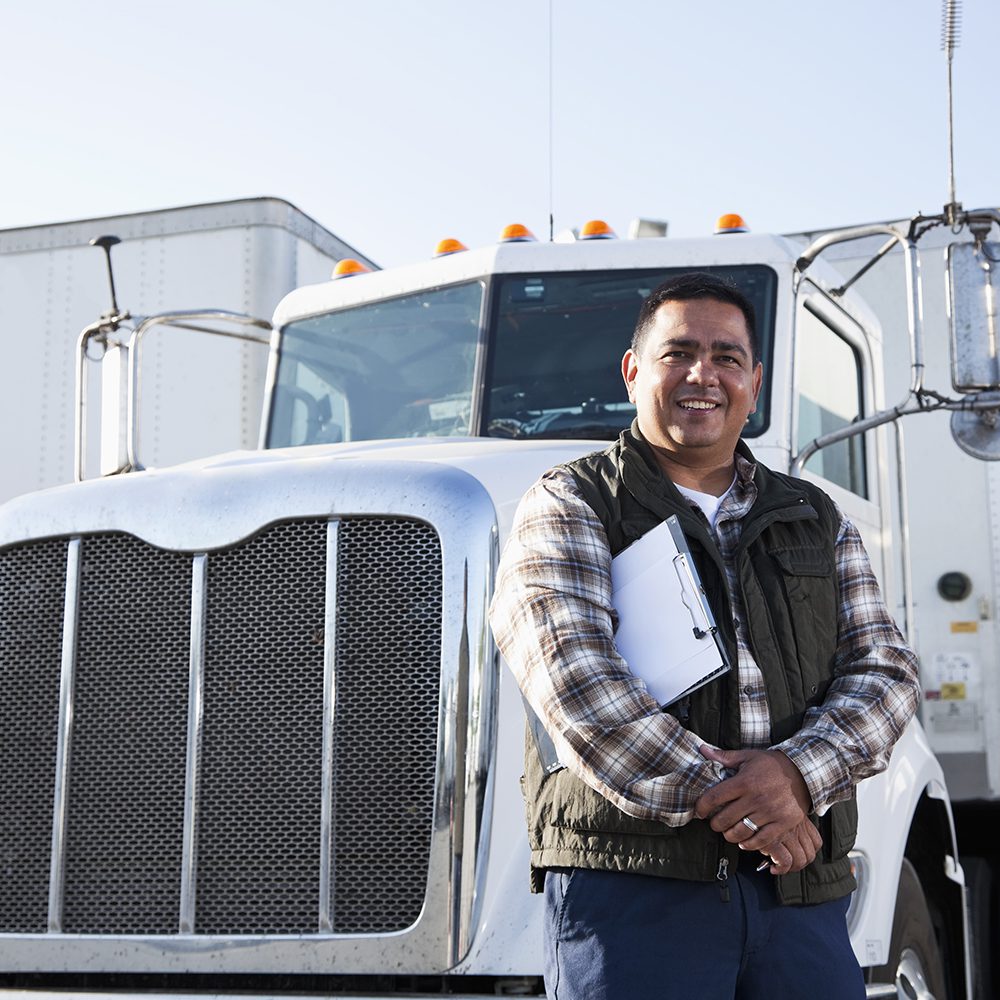
How Tolling Technology Is Advancing and What It Means for Fleets
Diverse and sophisticated tolling models are replacing the traditional systems we’ve seen for years. Toll collection is among the many industries embracing advanced technology, and the future holds promising ways to avoid overpricing and pricing schemes for many drivers.
The next phase of toll collection is underway, bringing new methods of paying for transportation. Devices and technologies are competing to enforce and charge tolls. New best practices are emerging for toll providers, and toll chargers are focusing heavily on communication. Discover the importance of tolls for your fleet and what to expect in the future of toll collection.
Tolls Definition and Its Importance for Fleets
A toll is a tax you pay for a privilege or liberty. In this context, a toll is a charge for transportation services to pass over a road, tunnel or bridge. A toll road, or a turnpike or tollway, is a private or public road that requires drivers to pay a fee to use. The fees for the bridges, tunnels and roads reduce maintenance and construction costs. The charge amount varies among vehicles, accounting for factors like vehicle weight, type and axle number. For example, a freight truck typically pays more than a car to use toll roads.
Toll roads are an asset for many industries, offering safe and efficient travel while lowering the negative impacts of goods transportation. Drivers needing to travel long distances can rely on toll roads to find the most efficient drive, often spending a large portion of their route on one road. This minimizes taking inconvenient routes with many stops or turns, allowing drivers to shorten their drive times.
Toll roads also offer a more seamless experience by typically having less traffic. Many drivers commuting to work, completing errands and making non-essential trips avoid these roads to prevent paying unnecessary costs. Workers delivering goods can use toll roads to avoid large amounts of traffic, limiting stops and wait time in congested areas. This also helps keep roads safer for other drivers because fleet drivers can limit their time in hazardous conditions with speed changes and stop requirements that can cause accidents or impact others on the roadway.

Traditional Tolling Technologies
Tolls have been a significant part of history. Mythology and fables have long featured paid passage, so it’s not surprising that people have been using this practice for thousands of years. Earlier than the 15th century, people implemented tolls for travelers crossing under or over bridges. In the 17th century, the first turnpike systems appeared in Wales and England, and America completed its first turnpike in 1795.
In the early stages of toll collection technology, human operators would man these spaces in booths, asking drivers to pay the exact change for using a toll road. As more cars and roads began joining the world, the need for construction and maintenance increased, amplifying the need for additional costs. By the 1980s, electronic toll collection had arrived, producing the transponder.
Electronic tolls presented an opportunity for drivers to pay their charges in a more flexible, efficient and modern way. The integration of items like the E-ZPass allowed drivers to reduce wait times and prevent traffic jams that would occur at the tool booths. For decades, drivers could choose to pay the standard toll or acquire a transponder to skip the line.
Advancements in Tolling Technology and Its Impact on Fleets
Some major advancements in toll collection center around a long-time criticism of toll roads. Many people found it inconvenient to stop at a toll booth to pay a charge. As a result, we’ve seen a large shift in digital payment platforms and through mobile devices to minimize downtime and make payments more accessible. Electronic toll collection reduces this problem and makes it easier to reach out with questions or concerns.
These advancements allow fleets to save more time and money driving while finding the most efficient routes. For example, companies can discover payment errors quickly and address their concerns in a much short time. Whether there was an error when reading a driver’s transponder or an overcharging issue, companies can contact/ their providers and payment platforms to quickly receive refunds or credits.
The Future of Tolling Technology
The future of toll collection is bright. With the ability to limit congestion and save time and money driving, current technologies make travel much more convenient. Currently, the electronic toll collection market is increasing in competition from providers and payment platforms. We’ll likely see new ideas emerge with unique ways to pay for tolls while reducing errors like overpricing or misreads.
There has also been a considerable push toward contact/less payment methods after the COVID-19 pandemic in 2020. Digital contact/less connections like Bluetooth, GPS and image-based options have grown in popularity. It’s possible we might see these options rise as a solution for toll collection in the future.
As we move toward more comprehensive solutions, new concerns are emerging. In the United States, there is a strong focus on the following:
- Electronic security: Drivers need to feel comfortable that their information is secure. Online systems need additional security to make their information inaccessible or shareable with other providers, industries and people.
- Physical security: Video surveillance and biometric authentication can restrict access to data centers to keep drivers safe.
- Communication: Authentic communication that shows integrity and confidentiality can secure data traffic.
- Compliance: Toll providers and payment platforms must comply with security standards and coding principles to show their commitment to traveler safety.
Other advancements, such as the increase of ride-sharing, battery technology and autonomous vehicles, will also shape the future of tolling technology. Road user charging, a new road pricing model, could lower emissions, replacement fuel taxes, road infrastructure financing and demand management.
Find Electronic Toll Collection Solutions From Bestpass
Bestpass is a comprehensive solution for toll collection. We’re a leader in toll management solutions, providing commercial fleets with a payment platform to make toll collection more accessible and efficient. We help businesses save money and time while ensuring data accuracy.
We have strong connections with tolling authorities, which empowers us to be the premier payment option for fleets across Canada and the United States. We offer reliable toll management, so you can spend less time dealing with paperwork and more time handling the issues that really matter.


